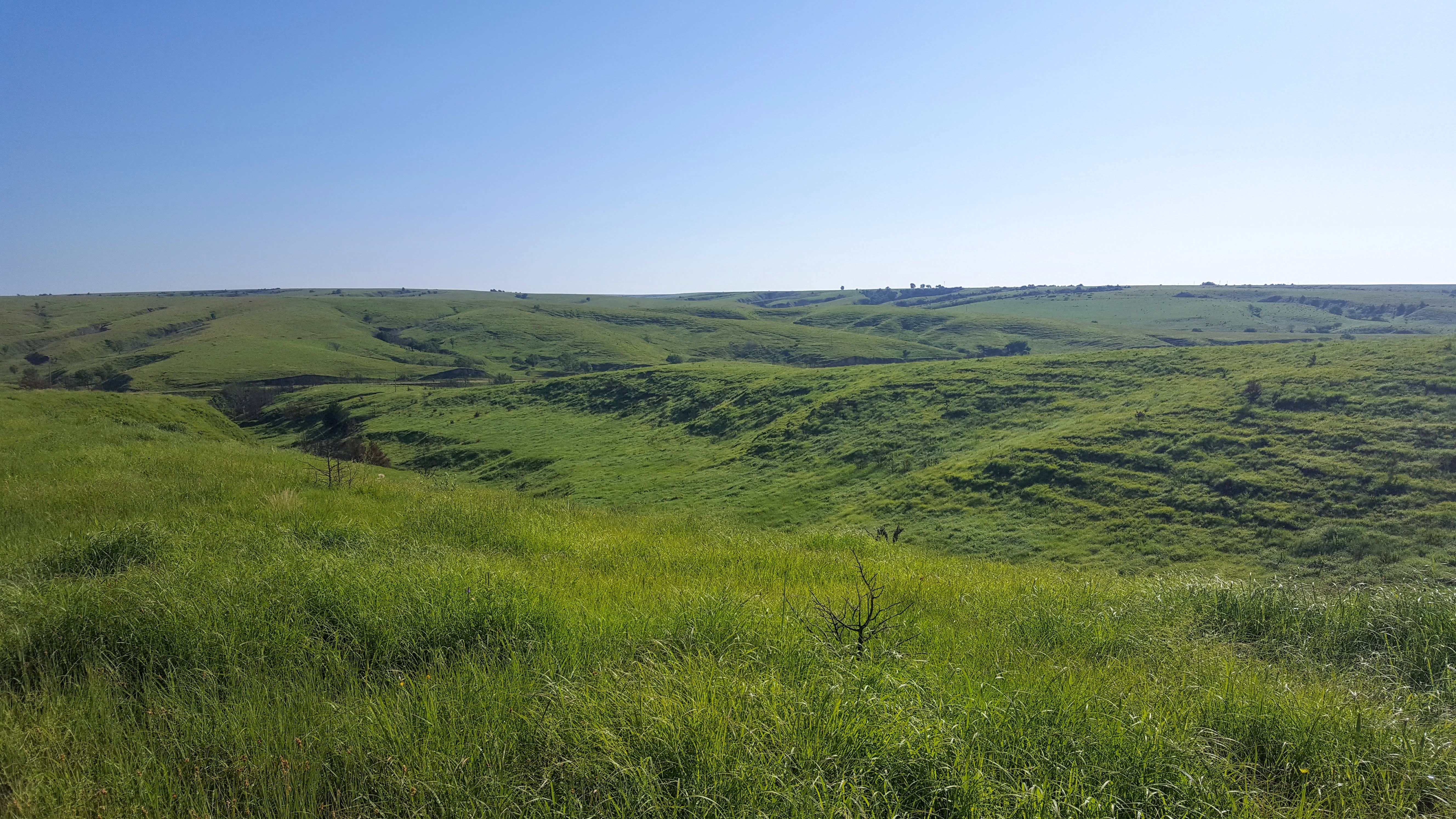Biodiversity is most rapidly declining on grasslands of all the terrestrial biomes, and large-scale interventions are much needed to restore these landscapes. In their latest Practice Insights, Caleb Roberts and colleagues showcase long-term efforts in successfully restoring the Loess Canyons, USA, using fire as tool. Find out more about the story behind the cover of our latest issue.

Imagining the Great Plains of the United States conjures images of vast, treeless landscapes filled with swaying grass, singing songbirds and contentedly grazing cattle. While much of the Great Plains still does resemble this picturesque ideal, large swaths of grasslands now look more like forests following a century of woody species encroachment. Scientists are documenting how private landowners can best fight back against this threat, ultimately benefitting the land and the wildlife that call it home.
The Great Plains historically depended on fire to manage encroaching trees before the arrival of European settlers. Today, fire is still one of the best ways to combat this threat to native grasslands. Prescribed – or controlled – burning as a conservation practice kills mature trees, removes seeds and seedlings, and helps recycle nutrients back into the soil.
Restoring biodiversity in the Loess Canyons
In the Loess Canyons of Nebraska, landowners have used prescribed burning for nearly two decades to address woody encroachment.
Research funded by the Nebraska Game and Parks Commission and led by Caleb Roberts, a research ecologist with the United States Geological Survey (USGS) Arkansas Cooperative Fish & Wildlife Research Unit. demonstrates how these fire treatments have not only restored productivity on privately owned rangelands but also increased the number of grassland bird species found across most of this ecoregion.
Science documenting increases in bird populations or increased diversity of species in specific areas due to conservation efforts is rare. More than 700 million birds have been lost from grasslands, and 74 percent of grassland bird species are in decline in the Great Plains – the highest of any region in North America.

We used 14 years of fire treatment data, six years of grassland bird monitoring data, and remotely sensed tree cover data from the Rangeland Analysis Platform (RAP) across more than 330,000 acres of privately owned grasslands to observe how grassland-dependent birds responded to landscapes restored by prescribed burning.
We found the number of grassland bird species increased across 65% (~222,000 acres) of the Loess Canyons and woody plant cover decreased up to 55% across a quarter of all fire-treated areas.
These results showed that the number of grassland bird species increased across nearly two thirds of the Loess Canyons. In grasslands, such a large positive response across a large area at this scale is unheard of. Put another way, grassland birds have declined more than any other bird group in North America, but the Loess Canyons are bucking that trend. Our research gives clear evidence that it was large-scale fire treatments that drove this huge conservation success.
Future implications
This study is one of the first to show how strategic, long-term human management at the ecoregion scale can reverse the impacts that woody species have on grasslands and the richness of bird species that depend on intact, resilient, and tree-free grasslands. Combined with other findings from the Loess Canyons, this work will continue to inform future conservation projects addressing the woody encroachment threat.

Given how successful prescribed burning in the Loess Canyons has been, we are also gleaning overall strategies for combating woody encroachment and restoring grasslands at large scales.
The prescribed fires in the Loess Canyons were intense, large, and clustered fire treatments that straddled grassland-woodland boundaries. These characteristics distinguished the Loess Canyon strategy from others. Lots of grassland restoration efforts use fire treatments, but few do it in this way, let alone at the same scale. When fires straddle grassland-woodland boundaries, you get more bang from your buck and have longer-lasting results than if you chip away in areas already heavily infested with trees.
Declines in populations and bird species diversity do not have to be permanent. In fact, our research clearly shows that both productive grasslands and species richness can be recovered through concerted, landscape-scale action like that in the Loess Canyons.
In short, if enough of us can muster the willpower, science shows we have the means to save the grassland biome in the Great Plains and the species that depend on it.
Read the full Practice Insights: “Large-scale fire management restores grassland bird richness for a private lands ecoregion” in Issue 3:1 of Ecological Solutions and Evidence.
